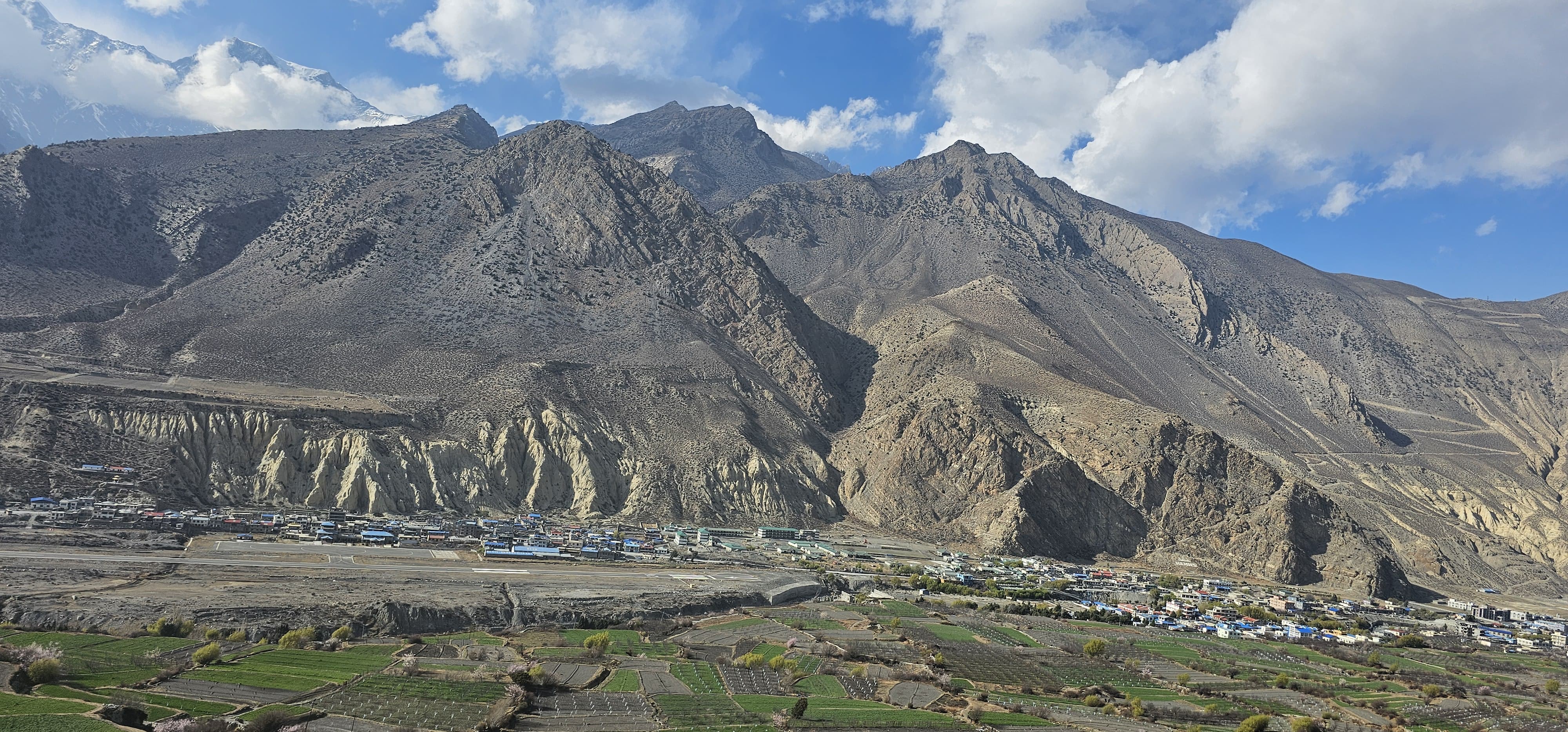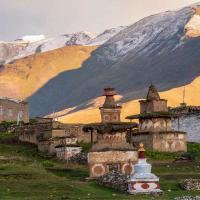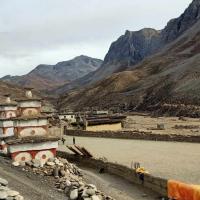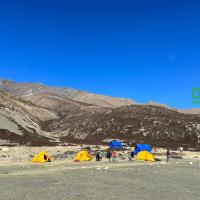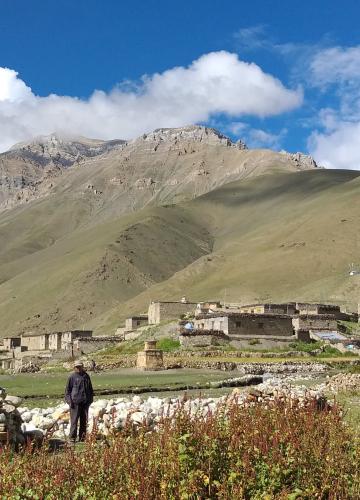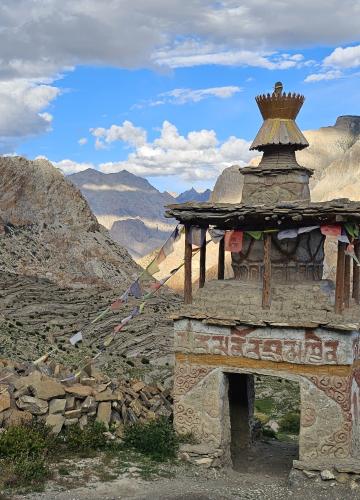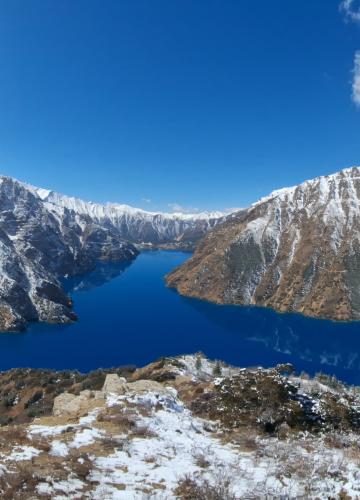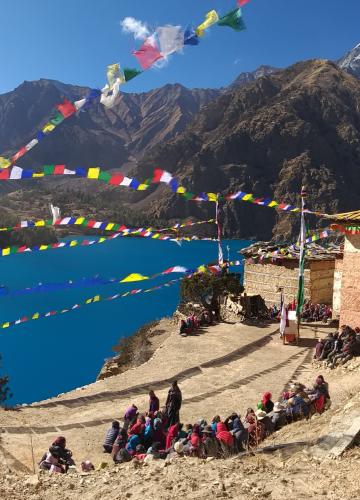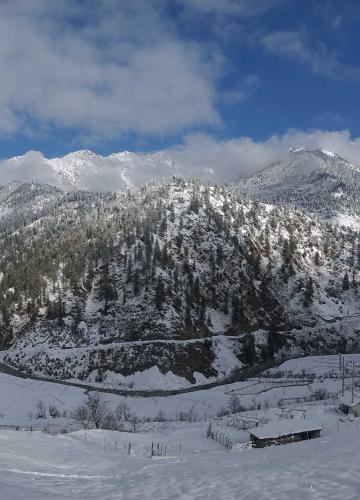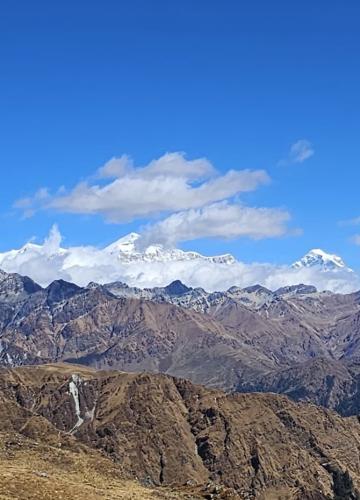The Dolpo Jomsom Trek is a mesmerizing expedition through the remote and rugged terrain of western Nepal. Combining the serene beauty of the Dolpo region with the dramatic landscapes of Upper Mustang, this trek is a once-in-a-lifetime adventure for those seeking solitude, cultural immersion, and unparalleled natural beauty. Nestled in the trans-Himalayan zone, this route offers an unforgettable blend of high-altitude desert landscapes, deep river valleys, and centuries-old Tibetan Buddhist culture.
This route starts from the tiny Juphal Airstrip, encircled by Dolpo, and makes its way to a bustling town named Jomsom within Mustang. It crosses some of the most captivating parts of Nepal. It also takes about 24 to 30 days based on the schedule undertaken and the preference of the pace by the trekkers. Though quite tiresome, it compensates with fresh landscapes, excellent mountain scenery, and different local experiences that are enriching in culture.
The Dolpo Jomsom/Mustang Trek is more than just a physical journey; it is a passage through time and culture. The ancient trade routes, sacred monasteries, and the resilience of communities surviving in harsh environments make this trek a deeply enriching experience. The interplay of stark geographical features with rich spiritual heritage creates a tapestry that leaves trekkers awestruck at every step.
This historical and geographical richness is what makes the Dolpo Jomsom Trek a unique and transformative adventure.
Highlights
- Traverse through Shey Phoksundo National Park, home to the stunning Phoksundo Lake
- Explore the unique Tibetan-influenced culture of Dolpo’s isolated villages
- Cross high-altitude passes like the Numala Pass (5,318m) and Bagala Pass (5,190m)
- Experience the stark contrast between Dolpo’s arid landscapes and Jomsom’s lush valleys
- Walk alongside ancient caravan routes and explore centuries-old monasteries
Dolpo Jomsom Trek Difficulty
The Dolpo Jomsom Trek difficulty is categorized as strenuous, suitable for experienced trekkers. The trek involves multiple high passes above 5,000 meters, long trekking days, and remote trails with limited facilities. Proficient trekkers with excellent physical abilities and proper acclimatization process must be obtained beforehand.
Dolpo Jomsom Trek Cost
The price of the Dolpo Jomsom Trek depends on factors including group number, time of year and type of services chosen by clients. The standard cost typically costs between $3,800 and $4,000 for each person which includes permit fees as well as domestic flights and local lodging and food services and guiding services and porter fees. Extra costs from the basic trek fee include prolonged stays, personal equipment purchases and travel protection.
A Unique Blend of Dolpo and Mustang
The Dolpo Jomsom Trek is unique in its ability to combine two of Nepal’s most fascinating regions: Dolpo and Mustang.
- Dolpo: Known for its isolation, the Dolpo region is a mystical land of ancient monasteries, traditional Tibetan culture, and serene natural beauty. It is also home to rare wildlife such as the snow leopard and blue sheep, protected within Shey Phoksundo National Park.
- Mustang: Often referred to as the “forbidden kingdom,” Mustang captivates with its arid landscapes, towering cliffs, and ancient caves. The region’s walled city, Lo Manthang, offers a glimpse into a bygone era of Himalayan history.
The trek seamlessly transitions from Dolpo’s wild and untamed landscapes to Mustang’s vibrant and historic terrain, making it an unparalleled adventure in Nepal.
Why Choose the Dolpo Jomsom Trek?
Here’s an overview of the key reasons why the Dolpo Jomsom Trek stands out:
- Shey Phoksundo National Park and Lake: The route takes you through Shey Phoksundo National Park, home to Phoksundo Lake, one of Nepal’s deepest and most striking lakes. Its turquoise waters set against the barren cliffs of Dolpo create a scene of otherworldly beauty.
- Tibetan Buddhist Villages: Along the way, you’ll pass through secluded villages like Ringmo, Dho Tarap, and Chharka, where Tibetan Buddhist culture thrives. These villages offer insights into ancient lifestyles and spiritual practices that remain largely untouched by modernity.
- High Mountain Passes: The trek includes crossings of formidable passes such as the Kang La Pass (5,240 meters) and Jeng La Pass (5,090 meters), providing awe-inspiring vistas of snow-capped peaks and the stark beauty of the trans-Himalayan region.
- Diverse Landscapes: The trail traverses an incredible variety of terrains, from lush pine and rhododendron forests to high-altitude deserts. The constantly shifting scenery keeps trekkers captivated throughout the journey.
- Cultural Encounters: The trek provides opportunities to engage with diverse ethnic groups, including the Dolpo-pa and Thakali people. You’ll also encounter Tibetan refugees who preserve traditional customs, creating a unique cultural mosaic.
- Challenging but Rewarding: Known for its remote location, high altitude, and rugged trails, the trek is moderately difficult to challenging. It demands physical fitness and mental endurance, but the rewards are immense, both in terms of natural beauty and personal achievement.
- Permits and Conservation: Trekkers will need permits for Shey Phoksundo National Park and the restricted areas of Upper Dolpo and Mustang. These permits, arranged through licensed trekking agencies, contribute to preserving the fragile environment and local heritage.
Best Time for the Dolpo Jomsom Trek
The Dolpo Jomsom Trek offers diverse experiences throughout the year, but spring (March-May) and autumn (September-November) are considered the best seasons due to their ideal weather and trail conditions.
Spring (March-May):
- Weather: The weather is moderate, with pleasant temperatures during the day and cooler nights, especially at higher altitudes.
- Landscapes: Spring brings the trails to life with blooming rhododendrons and other alpine flowers. The greenery of the lower regions contrasts beautifully with the arid landscapes of Dolpo and Mustang.
- Visibility: Clear skies ensure uninterrupted views of snow-capped peaks and stunning valleys.
Autumn (September-November):
Weather: This is the most popular season for trekking, with stable, dry conditions. Days are sunny, while nights at higher elevations can be cold.
Landscapes: Post-monsoon clarity offers vibrant colors, from golden fields in the valleys to the stark beauty of Mustang’s cliffs.
Visibility: Exceptional mountain views and stunning sunrises make this season unforgettable.
Monsoon (June-August):
- Considerations: The monsoon brings heavy rains, especially in Nepal’s southern regions, but Dolpo and Mustang, located in the rain-shadow zone, remain relatively dry. However, trails can still become slippery, and flights to remote areas like Juphal may face delays.
Winter (December-February):
- Challenges: Winter trekking in Dolpo and Mustang is challenging due to snow-covered passes, extreme cold, and closed facilities in higher-altitude villages.
- Opportunities: For experienced trekkers willing to brave the cold, the solitude and serenity of the winter landscape can be an unmatched experience.
For more information on this incredible trek into the heart of the Himalayas, or to reserve your space and Customized Itinerary, contact us now.
